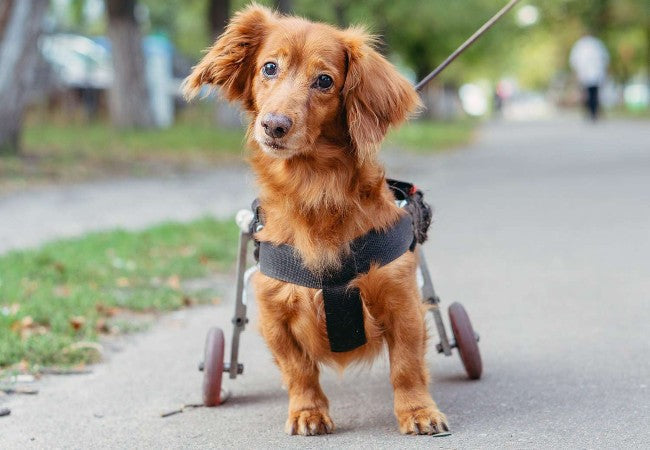Cerebellar Hypoplasia in Dogs: Vet-Approved Causes, Symptoms & Treatments (2025 Guide)🐶🩺

In this article
Cerebellar Hypoplasia in Dogs: Vet-Approved Causes, Symptoms & Treatments (2025 Guide)🐶🩺
By Dr. Duncan Houston BVSc
As a veterinarian, I occasionally encounter cases of cerebellar hypoplasia in dogs—a condition that can significantly impact a dog's coordination and balance. Understanding this disorder is crucial for early detection and effective management. This comprehensive guide aims to educate pet owners on the causes, symptoms, and care strategies for cerebellar hypoplasia in dogs.
🧬 What Is Cerebellar Hypoplasia?
Cerebellar hypoplasia is a neurological condition where the cerebellum, the part of the brain responsible for coordination and balance, is underdeveloped. This congenital disorder is typically present at birth and results in varying degrees of motor dysfunction. Importantly, cerebellar hypoplasia is non-progressive, meaning it does not worsen over time.
🐾 Causes and Risk Factors
Several factors can contribute to cerebellar hypoplasia in dogs:
- 🧬 Genetic Predisposition: Certain breeds, such as Airedales, Chow Chows, Boston Terriers, and Bull Terriers, have a higher incidence of this condition.
- 🦠 Infections: Viral infections like canine parvovirus or canine herpesvirus during pregnancy can interfere with cerebellar development.
- ☠️ Toxins: Exposure to certain toxins during gestation may impact fetal brain development.
- 🍽️ Nutritional Deficiencies: Inadequate nutrition in the mother during pregnancy can affect the developing cerebellum.
⚠️ Symptoms of Cerebellar Hypoplasia
Signs of cerebellar hypoplasia typically become apparent as puppies begin to walk and explore their environment, usually around 6 weeks of age. Symptoms may include:
- 🔄 Head bobbing: Involuntary head movements, especially when focusing on objects.
- 🐾 Ataxia: Uncoordinated movements and a wide-based stance.
- 🚶 Hypermetria: Exaggerated stepping or high-stepping gait.
- 🌀 Intention Tremors: Shaking that intensifies with purposeful movement.
- 🤕 Frequent Falls: Difficulty maintaining balance, leading to falls.
These symptoms are typically consistent and do not progress over time.
🩺 Diagnosing Cerebellar Hypoplasia
Diagnosis involves a combination of clinical evaluation and diagnostic tests:
- 🧪 Physical Examination: Assessing neurological function and coordination.
- 🖼️ Imaging: MRI scans can confirm underdevelopment of the cerebellum.
- 🧬 Genetic Testing: May be recommended for breeds with known predisposition.
Early diagnosis is essential for implementing appropriate care strategies.
💊 Treatment and Management
While there is no cure for cerebellar hypoplasia, many dogs can lead fulfilling lives with supportive care:
- 🏠 Safe Environment: Providing non-slip surfaces and minimizing obstacles to prevent injuries.
- 🧘 Physical Therapy: Exercises to improve coordination and muscle strength.
- 🍽️ Feeding Assistance: Using elevated bowls or hand-feeding to aid in eating.
- 🛏️ Comfortable Resting Areas: Soft bedding to cushion falls and provide comfort.
Consistency and patience are key in managing this condition.
🛡️ Preventing Cerebellar Hypoplasia
Preventive measures focus on maternal health during pregnancy:
- 💉 Vaccination: Ensuring the mother is vaccinated against diseases like parvovirus before breeding.
- 🥗 Proper Nutrition: Providing a balanced diet to support fetal development.
- 🏥 Regular Veterinary Care: Monitoring the mother's health throughout pregnancy.
📱 Support and Resources
If you suspect your dog has cerebellar hypoplasia, consult your veterinarian promptly. For additional support:
- Ask A Vet: Access professional veterinary advice through the Ask A Vet platform.
- Download the Ask A Vet App: For quick access to veterinary support, download the Ask A Vet app.
Early diagnosis and appropriate care can significantly improve your dog's quality of life.
🐾 For more expert advice and pet care tips, visit AskAVet.com.






